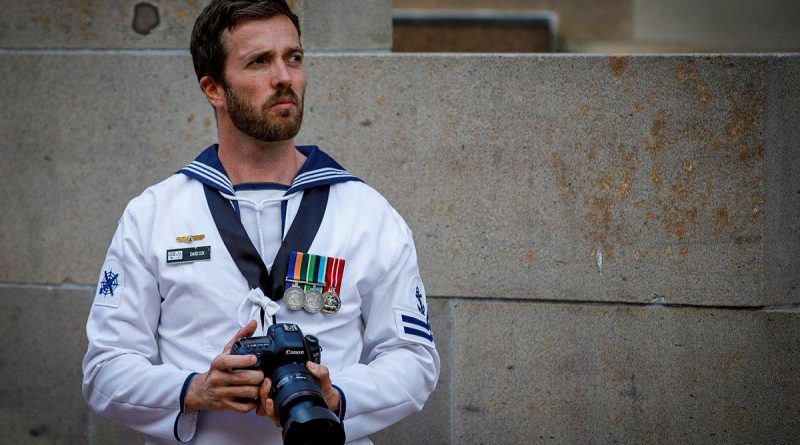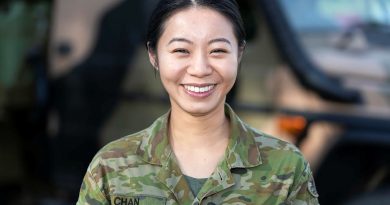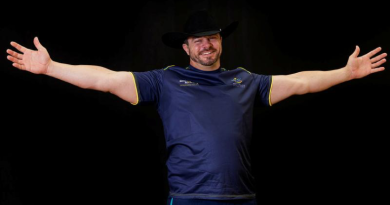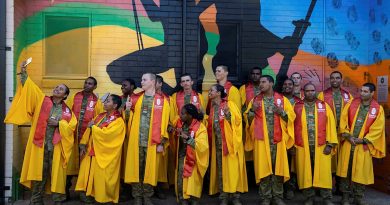Mixing two passions in the Navy

Leading Seaman Imagery Specialist David Cox, from Camden, NSW, has combined two of his passions after graduating from Session 006 of the ADF Imagery Specialist Initial Employment Training (IS IET).
CAPTION: Leading Seaman David Cox captures photographs at the Australian War Memorial in Canberra as part of his Initial Employment Training Course. Story by Petty Officer Helen Frank. Photo by Trooper Jonathan Goedhart.
“I love the Navy and am passionate about photography so it was a no-brainer that I combine the two,” Leading Seaman Cox said.
The ADF IS IET is a 23-week course where students undertake a Certificate IV in photography at TAFE three days a week and learn the military side of their new trade for the other two days at ADF Imagery School at Garden Island, Sydney.
Session 006 was the first truly triservice class to have graduated this training. Two Navy, two Army and one RAAF students will now capture images of operations around the world and promote the hard work of the ADF.
Commander Information Warfare Force Captain Paul Johnson said the demand for image specialists had increased during the past 18 months.
“Throughout this year the Navy Imagery Unit within Information Warfare Force has deployed for Regional Presence Deployments and Operation Argos and will now deploy for Indo-Pacific-Endeavour,” Captain Johnson said.
“On the exercise front, image specialists regularly deploy for shorter periods on Major Fleet Units and Minor War Vessels to document a range of joint and allied exercise activities, such as Talisman Sabre.
“Domestically we have supported a busy schedule of ceremonial activities, high-profile visits, cultural and sporting events and are also covering Navy’s domestic commitments to the COVID Task Force and other crisis response activities.”
The ADF IS IET teaches students how to operate equipment and systems, including professional hand-held stills and video equipment in direct support of operations, exercises and taskings.
Leading Seaman Cox said the highlight of the course was a road trip to Canberra where students were given the opportunity to work in real-life scenarios.
“It was a nice break from the classroom environment and good, real-time practice for us,” he said.
“It was also beneficial to see behind-the-scenes and meet people and agencies we’ll be working alongside.”
He said he would recommend a change of category to imagery specialist but only if you love Defence and photography.
“It’s a hard balance to be a creative type while also fitting into the military mould,” he said.
“It isn’t a cruisy job like some people say; in fact it’s only getting harder as we’re required to produce more and be more creative every time we shoot.”
Imagery specialist sailors provide an essential capability within the fleet units, working with naval intelligence officers to capture intelligence imagery, supporting operational and tactical evidence collection, and working with public affairs and information effects specialists to provide the pictures that inform internal, national and domestic audiences on the operations of the fleet, Navy and broader ADF.
.
.

.
.





